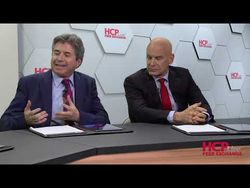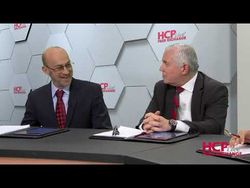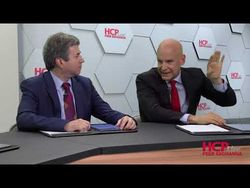Reducing Risk in Cardiovascular Events - Episode 1
The Pathophysiology of Hypercholesterolemia
Deepak L. Bhatt, MD, MPH: Hello, and thank you for joining this HCPLive® Peer Exchange titled, “Reducing Risk in Cardiovascular Events.”
Hypercholesterolemia is an important risk factor for atherosclerotic cardiovascular disease [ASCVD] and is usually symptomatically quiescent until significant atherosclerosis has developed. A large body of evidence supports that statins are still the first-line option for the management of hypercholesterolemia in a large percentage of patients. Even in patients receiving appropriate treatment with statins, a substantial residual cardiovascular risk remains. Our discussion today focuses on the management and reduction of cardiovascular risks in these patients.
I am Dr Deepak Bhatt, executive director of interventional cardiovascular programs at Brigham and Women’s Hospital as well as a professor of medicine at Harvard Medical School, in Boston, Massachusetts.
Participating today on our distinguished panel are:
Dr Christie Ballantyne, a professor of medicine, the chief of the section of cardiovascular research, the chief of the section of cardiology, and the director of the Center for Cardiovascular Disease Prevention at the Baylor College of Medicine in Houston, Texas.
As well, Dr James Underberg, diplomate for the American Board of Clinical Lipidology, a clinical assistant professor of medicine at NYU Langone Health and the NYU Langone Medical Center for the Prevention of Cardiovascular Disease, the director of the Bellevue Hospital Lipid Clinic, and the president of the American Board of Clinical Lipidology in New York, New York. It’s really a mouthful there.
As well, joining us today is Dr Mike Miller, a professor of cardiovascular medicine, epidemiology, and public health at the University of Maryland School of Medicine in Baltimore, Maryland. He’s also a staff physician at the VA [Veterans Affairs] Medical Center and the director of the Center for Preventive Cardiology at the University of Maryland Medical Center in Baltimore, Maryland.
Finally, Dr Steven Nissen, who is the chief academic officer at the Heart and Vascular Institute, as well as the Lewis and Patricia Dickey Chair in cardiovascular medicine at the Cleveland Clinic and a professor of medicine at the Cleveland Clinic Lerner College of Medicine of Case Western Reserve University in Cleveland, Ohio.
Thank you so much for joining us. Let’s go ahead and get started. We have a lot of ground to cover today. It’s really fantastic being with 4 distinguished faculty members and, more important, friends, so it’s really going to be a fun 90 minutes—perhaps at times controversial, maybe even contentious. But we’ll keep it civil and fun—or maybe not. We’ll see how things go. Maybe we can start off talking about the pathophysiology of hypercholesterolemia and cardiovascular disease. Jim, you’re on the frontlines dealing with these sorts of patients and these sorts of issues. What do you think?
James A. Underberg, MD, MS: Cholesterol is central to the development of atherosclerosis, the deposition of atherogenic or APOB-containing lipoproteins into the subendothelial space. And the role they play in the development of the fatty streak and the atherosclerotic plaque is key. There are several factors that allow us to understand the causality of LDL [low-density lipoprotein] and ASCVD. The first is epidemiological data, the second is experimental data, and the third is interventional data. The tempo relationship and the exposure of this risk factor to the patient determine the impact it has on risk for cardiovascular disease. The mistake a lot of people make is that there are patients with high cholesterol who don’t get heart disease and patients with normal or lower levels of cholesterol who do. And that speaks to everything else we’re going to talk about today, which is the role of other risk factors in modulating how cholesterol plays a role in this factor.
Transcript edited for clarity.



